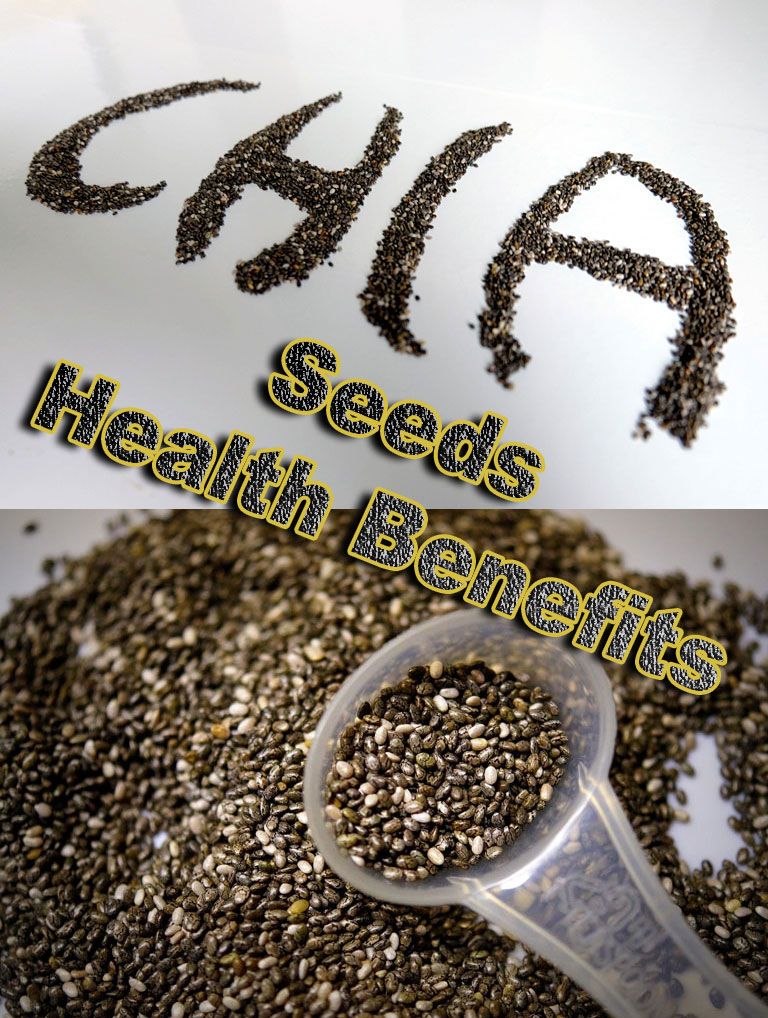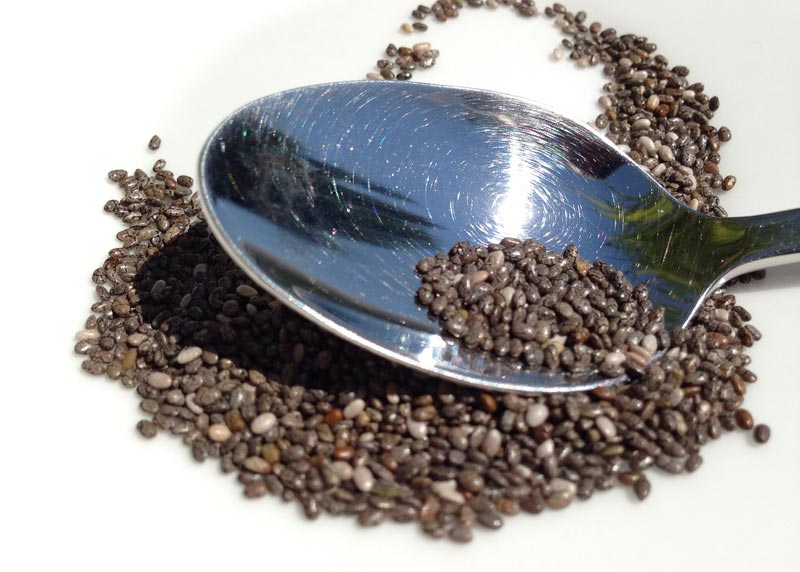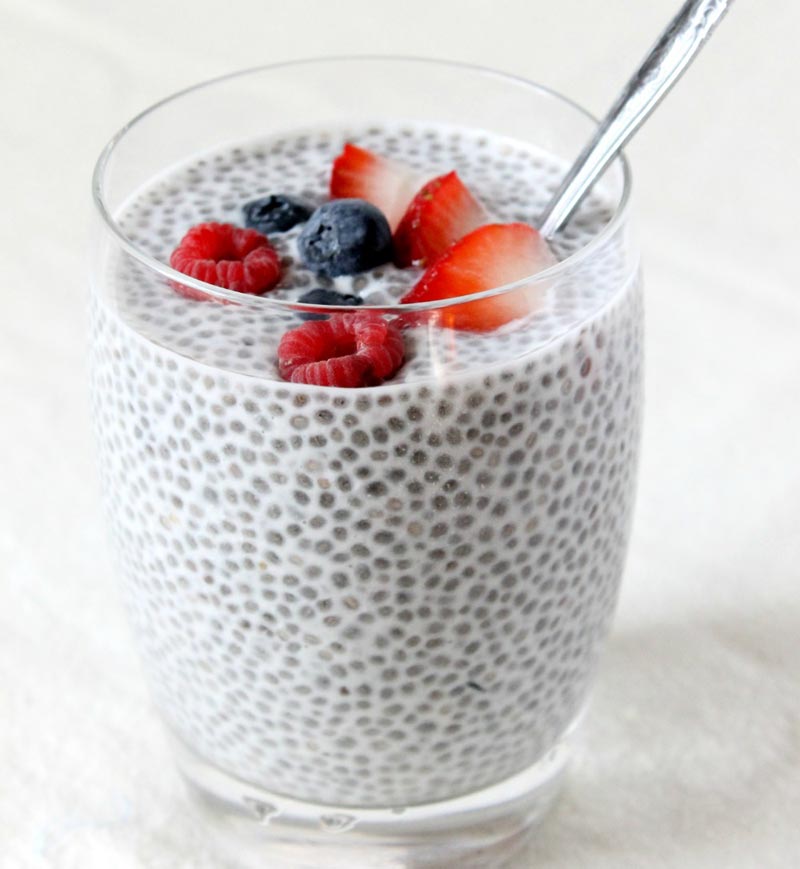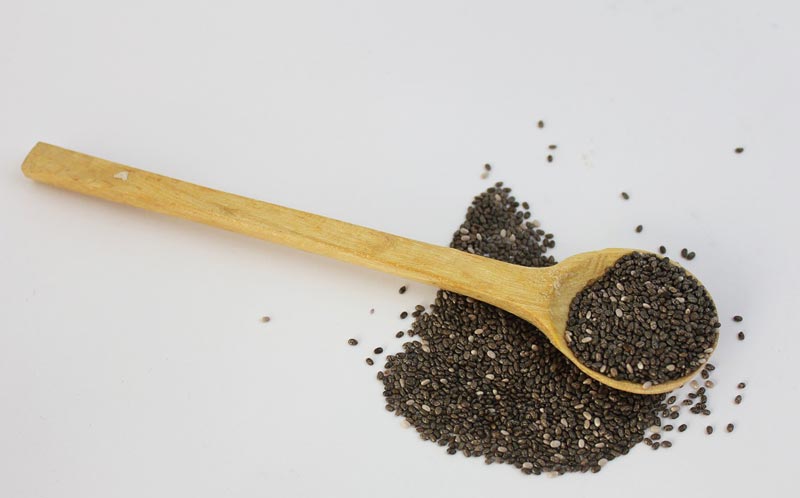
A naturally gluten-free grain, chia has been a somewhat unknown commodity in the U.S. until recent years. But while much of the world may still be unaware of its wide variety of dietary attributes, it makes up 24 percent of Argentina’s agricultural industry, and four percent of all the grain produced on the planet. As its nutritional attributes have been revealed – such as lowered stroke and heart disease risk – the chia plant’s tiny mottled brown and white seeds and the oils inside them are being recognized for off-the-charts health value.
An annual herb grown in arid environments, chia is sometimes called Mexican chia, black chia, or Spanish sage. Yes, it’s the same tiny foliage that has inspired a series of cute, potted Christmas gifts for the last few generations, but chia plants, which have small lavender or white spiked flower clusters at the top, can grow as high as four feet. Like mint, it’s a member of the Lamiaceae family with several close relatives. In the southwestern United States, for instance, native Americans ground “golden chia” (Salva columbariae) seeds into flour or simply ate them as an energy enhancer. In Asia, “dan shen” or Salvia miltiorrhiz roots were put to medicinal use.
Awareness regarding chia’s commercial viability seems to be growing rapidly, especially in the US. In fact, the first American company to grow the plants and market chia seeds was founded in 2014 near Louisville, KY. US Chia’s first focus was equine feed, but growing interest in the marketplace is driven by its use in a wide variety of foods, including cooking oil and supplements.
Chia seeds are sprouting increased interest in kitchens across the US, Canada, Australia, Mexico, Chile, and New Zealand for use in salad dressings, fruit juices, yogurt, cereals, cakes, cookies, and breads (although the European Commission has limited chia seed use in breads to no more than 5 percent). You can grind raw, organic chia seeds in your coffee grinder to add to protein shakes, and raw chia sprouts can be eaten in salads and sandwiches.
Kept in a dry environment, chia seeds can be kept for years because their natural antioxidants prevent the deterioration of their important essential oils. As an added bonus, the oil contains natural insect repellents so the plants can be grown without introducing harmful chemicals and pesticides.
Chia Seeds Health Benefits
It’s the exceptionally health-boosting characteristics of chia seeds that make nutritionists sit up and take notice. High in protein , omega-3 represents an impressive 75 percent of the total oil content. These little seeds are also rich in valuable amino acids, antioxidants, and flavonoids, including chlorogenic acid, caffeic acid, myricetin, quercetin, and kaempferol. Along with other benefits, studies show quercetin and kaempferol to have possible have preventative effects against post-menopausal bone loss.1
Explaining why a combination of light and dark of chia seeds were used in a randomized, double-blind, placebo-controlled study, a Nutritional Science Research Institute article2 noted several interesting findings:
“Research done in diabetic subjects has shown that it is a low glycemic index food. This means that eating Chia (Salvia hispanica L) with other food decreases the blood sugar spike an hour after a meal. As such, the subsequent sugar drop an hour later is less intense, and this is known to lead to decreased feelings of hunger.
Further research in diabetic subjects shows that about 40 grams of Chia (Salvia hispanica L) per day results in significantly decreased systolic blood pressure. C-reactive protein (CRP), a blood protein that is a measure of chronic inflammation, was also reduced significantly.”
The NSRI article also reported:
“When Dr. Bukowski began reporting NSRI’s findings in Chia we were amazed. First we analyzed the white chia. Then we analyzed the dark seed, although the nutrition analysis was almost identical we discovered that the darker Chia had an additional important antioxidant, quercetin. It is well known that darker foods have more antioxidants than lighter ones. This proved to be so in the ORAC (oxygen radical absorbance capacity) analysis… Our analysis showed that Omega 3 Chia contained one of the highest levels of omega 3s found in any food. It also turns out to have the highest amount of antioxidants we have ever measured, equal to or greater than dark berries like blueberries.”
While chia seeds contain zero cholesterol or sodium, they possess high stores of calcium (18 percent of the RDA), phosphorus (27 percent of the RDA), and manganese (30 percent of the RDA). Niacin, a B vitamin, is another chia seed ingredient that helps reduce LDL (bad) cholesterol levels in the blood, prevent nervous system disorders, and increases GABA activity inside the brain, which in turn helps reduce anxiety and even lessen the effects of Alzheimer’s.
Predictably, chia also contains high amounts of dietary fiber – 42 percent of the daily recommended value – which helps you feel full faster and may contribute to weight loss. Chia seeds are an excellent fiber source because of their unique blend of insoluble along with soluble fiber, which creates a gelatinous effect when soaked in liquid. This eases bowel movements, but also contributes to necessary fermentation of foods throughout the length of the colon, especially the end at the end where colon cancer occurs most often. Fiber also has the additional benefit of inhibiting the body’s penchant for breaking food down to sugars, resulting in more stable blood glucose levels.
Disclaimers on the “safety” of chia seeds are floating around, possibly related to their solubility. Depending on a few different factors, like the size of the seed and the type of liquid, the seeds can reportedly expand anywhere from 12 to 27 times their weight in water. This, of course, could make swallowing them difficult (dysphagia) and even lead to esophageal blockage if, for example, dry chia seeds were ingested and chased with half a glass of water.
Studies Done on Chia
Scientists examined the safety, active ingredients, and health benefits of chia.3 High levels of phenolic acid were found – 60 percent contained omega ω-3 alpha-linolenic acid, and 20 percent omega ω-6, presenting the potential to prevent diabetes, obesity, and heart problems, and help subjects maintain healthy serum lipid (blood sugar) levels. Omega-3 and omega-6 oils are required for optimum health and can’t be produced within the body; it must come from an outside source. Further, hens fed chia seed meal produced eggs with the highest ω-3 ALA content compared with hens fed flaxseed or rapeseed.
Canadian researchers studied Salvia hispanica L.4 for possible type 2 diabetes and cardiovascular health advantages. While continuing their conventional diabetes therapies, 20 subjects were given four grams of either chia seed or wheat bran for 12 weeks. Conclusion: long-term chia seed supplementation was accompanied by a “major” decrease in cardiovascular risk.
Another study5 also found empirical evidence fromrodent and clinical studies that diets containing Salvia hispanica seed may lower the risk factors for cardiovascular disease in type 2 diabetics, but also generate anti-tumor activity.
Related: Growing Chia (Salvia hispanica)








Leave a Reply